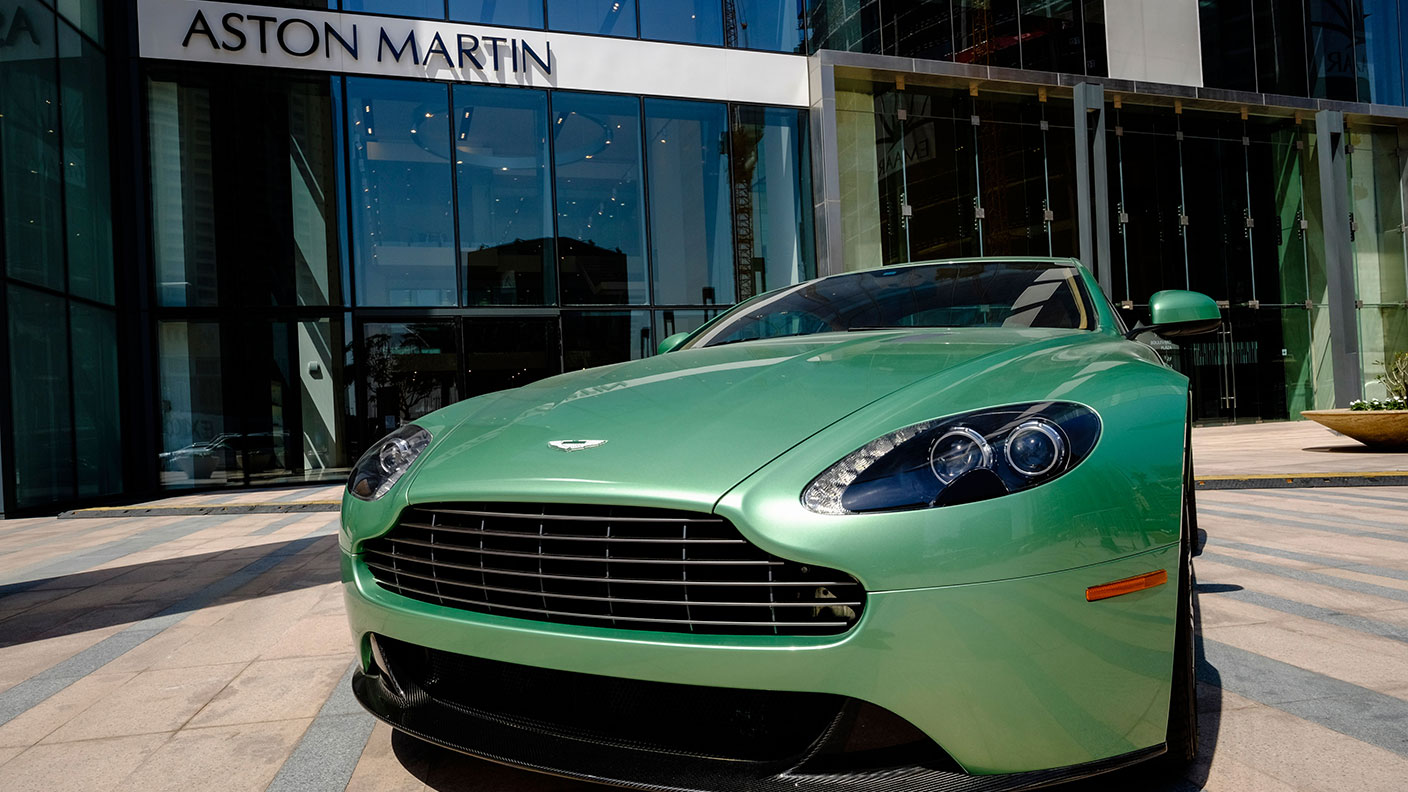I love its cars, but I wouldn’t touch Aston Martin’s shares
Aston Martin makes beautiful cars. But it has a chequered history and continues to lurch from disaster to disaster. That’s why I wouldn’t buy Aston Martin shares, says Rupert Hargreaves.


Peter Lynch is one of my investing heroes (if I’m allowed such a thing). The US growth investor had a mantra that he followed religiously throughout his career, “buy what you know.”
He only bought shares for his fund in companies that he knew well. He wanted to know what they sold, how they sold it, where the customers were and what the employees thought about management. And most importantly, he needed to like the product.
I try to follow these principles myself. I will only invest in companies if I like what they sell. If I don’t understand the product, I’m pretty sure I’m not going to understand the business.
MoneyWeek
Subscribe to MoneyWeek today and get your first six magazine issues absolutely FREE

Sign up to Money Morning
Don't miss the latest investment and personal finances news, market analysis, plus money-saving tips with our free twice-daily newsletter
Don't miss the latest investment and personal finances news, market analysis, plus money-saving tips with our free twice-daily newsletter
This brings me onto the luxury car maker Aston Martin (LSE: AML).
Aston Martin makes some of the most beautiful sports cars on the market. While it may not have the pedigree of Ferrari or Lamborghini, its place in popular culture gives the brand an illustrious standing.
However, while I love Aston’s products and would love to own one of its cars if I had the money, I wouldn’t touch the stock with a barge pole.
Aston Martin continues to lurch from disaster to disaster
Aston Martin has been struggling to survive from the very beginning. The company was founded in 1913, and couldn’t begin commercial production due to the outbreak of World War I.
The founders finally got back to work in 1920 after a cash infusion (the first of many). Four years later, the young enterprise went bankrupt, and was bought out, only to start struggling again a year later.
These early years pretty much set the tone for the rest of the car maker’s life. The company has gone bust seven times since its founding, and it has come close to its eighth insolvency in the past couple of years.
Aston Martin’s current chairman, Lawrence Stroll arrived on the scene in 2020, leading an investment consortium with the goal of putting the company’s issues behind it once and for all. Stroll has a background in turning around luxury brands and has earned himself a fortune in the process.
A critical part of Stroll’s plan was a billion-pound refinancing in October 2020. The funding was designed to draw a line under the firm’s financial issues and provide the cash to push ahead with restructuring.
However, while Aston was able to raise the cash, it had to pay a hefty price. More than 10% in fact, at a time when some European blue-chips were issuing debt at negative interest rates.
The fundraising saved the business, but at a huge cost. And now, the company is back for more.
Aston Martin’s funding woes
Aston is raising £653m from several major backers including Saudi Arabia’s sovereign wealth fund, the Public Investment Fund (PIF). The PIF is taking a 16.7% shareholding via a £78m placing while other shareholders, including major shareholder Mercedes-Benz, and Stroll’s Yew Tree consortium are all taking up pre-emption rights.
These investors are contributing £335m with other investors on the hook for £318m via a fully underwritten rights issue.
Stroll told the Financial Times that raising money was important to the company to “deal with the God-damned debt.” He has a point. Debt totalled £957m at the end of March and the group is paying more than £100m a year in interest costs. To put these numbers into perspective, the company’s market capitalisation is just £450m.
Valued at £4.3bn at the time of its IPO in October 2018, the carmaker has been a terrible investment to own over the past four years. Luckily for its long-suffering investors, it doesn’t look as if there’s a shortage of wealthy backers willing to keep the business afloat.
Aston has also received a £1.3bn investment proposal from China’s Geely and former owner, Investindustrial, the Italian investment group. Aston rejected this offer as being too low.
Deep-seated issues make this company uninvestable
Will this be the last time Aston has to tap investors for more cash? I think it’s unlikely. The firm is aiming to start producing cash by 2024, but that’s already been pushed back by a year. Sales in the first half were lower than expected with the group selling just 2,676 vehicles, although it is still aiming for 6,600 this year.
Aston’s problems run far deeper than its balance sheet. It has struggled with over-production, which left dealers with too much inventory. There’s also been a lot of management turnover: at the beginning of May it appointed its third CEO in three years. And new launches have been beset with delays and cost overruns.
To give Stroll his credit, he has started to steer the ship in the right direction. The car maker only produces cars that it has already sold, and he’s farmed out the manufacturing of engines (Mercades, which holds 20% of the company, makes most of those). That’s helped deal with some of the reliability problems Astons are known for.
Still, none of this will matter until the corporation can stand on its own two feet. Without cash coming in the door, it will continue to rely on the kindness of strangers. For that reason I’m not a buyer. I might love what the company is producing, but that does not mean I have to own the stock.
Get the latest financial news, insights and expert analysis from our award-winning MoneyWeek team, to help you understand what really matters when it comes to your finances.

Rupert is the former deputy digital editor of MoneyWeek. He's an active investor and has always been fascinated by the world of business and investing. His style has been heavily influenced by US investors Warren Buffett and Philip Carret. He is always looking for high-quality growth opportunities trading at a reasonable price, preferring cash generative businesses with strong balance sheets over blue-sky growth stocks.
Rupert has written for many UK and international publications including the Motley Fool, Gurufocus and ValueWalk, aimed at a range of readers; from the first timers to experienced high-net-worth individuals. Rupert has also founded and managed several businesses, including the New York-based hedge fund newsletter, Hidden Value Stocks. He has written over 20 ebooks and appeared as an expert commentator on the BBC World Service.
-
 David Zaslav, Hollywood’s anti-hero dealmaker
David Zaslav, Hollywood’s anti-hero dealmakerWarner Bros’ boss David Zaslav is embroiled in a fight over the future of the studio that he took control of in 2022. There are many plot twists yet to come
-
 Rightmove: Biggest January rise in property asking prices in 25 years
Rightmove: Biggest January rise in property asking prices in 25 yearsThe traditional Boxing Day bounce and post-Budget positivity combined to create a 2.8% jump in property asking prices, data suggests
-
 Halifax: House price slump continues as prices slide for the sixth consecutive month
Halifax: House price slump continues as prices slide for the sixth consecutive monthUK house prices fell again in September as buyers returned, but the slowdown was not as fast as anticipated, latest Halifax data shows. Where are house prices falling the most?
-
 Rents hit a record high - but is the opportunity for buy-to-let investors still strong?
Rents hit a record high - but is the opportunity for buy-to-let investors still strong?UK rent prices have hit a record high with the average hitting over £1,200 a month says Rightmove. Are there still opportunities in buy-to-let?
-
 Pension savers turn to gold investments
Pension savers turn to gold investmentsInvestors are racing to buy gold to protect their pensions from a stock market correction and high inflation, experts say
-
 Where to find the best returns from student accommodation
Where to find the best returns from student accommodationStudent accommodation can be a lucrative investment if you know where to look.
-
 The world’s best bargain stocks
The world’s best bargain stocksSearching for bargain stocks with Alec Cutler of the Orbis Global Balanced Fund, who tells Andrew Van Sickle which sectors are being overlooked.
-
 Revealed: the cheapest cities to own a home in Britain
Revealed: the cheapest cities to own a home in BritainNew research reveals the cheapest cities to own a home, taking account of mortgage payments, utility bills and council tax
-
 UK recession: How to protect your portfolio
UK recession: How to protect your portfolioAs the UK recession is confirmed, we look at ways to protect your wealth.
-
 Buy-to-let returns fall 59% amid higher mortgage rates
Buy-to-let returns fall 59% amid higher mortgage ratesBuy-to-let returns are slumping as the cost of borrowing spirals.